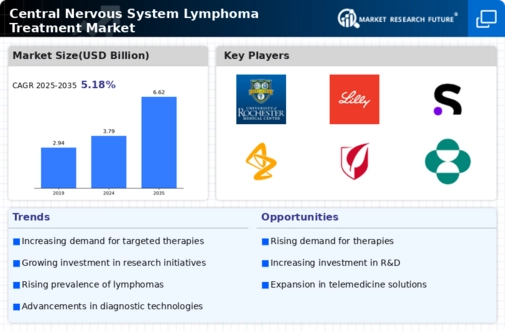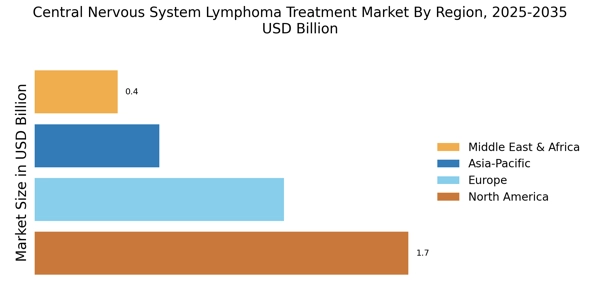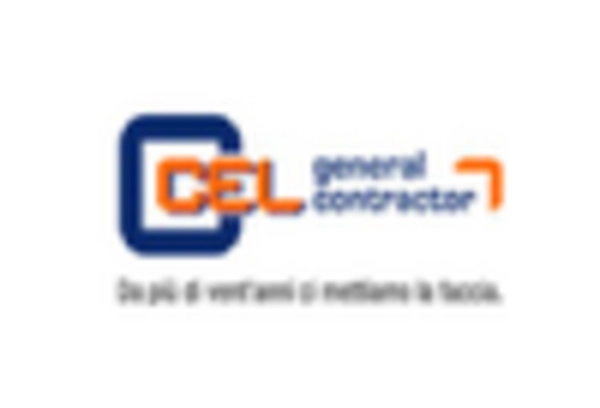Emergence of Combination Therapies
The emergence of combination therapies is reshaping the Central Nervous System Lymphoma Treatment Market. Clinicians are increasingly adopting multi-modal treatment approaches that combine traditional chemotherapy with novel agents, such as monoclonal antibodies and immunotherapies. This strategy aims to enhance treatment efficacy and minimize resistance, which has been a challenge in CNSL management. Recent studies suggest that combination therapies may lead to improved survival rates and quality of life for patients. As more clinical evidence supports the effectiveness of these approaches, the market is likely to witness a shift towards integrated treatment regimens. This trend not only reflects the evolving landscape of CNSL treatment but also highlights the potential for innovative solutions to address unmet medical needs.
Advancements in Diagnostic Techniques
Advancements in diagnostic techniques are significantly influencing the Central Nervous System Lymphoma Treatment Market. Enhanced imaging technologies, such as MRI and PET scans, allow for earlier and more accurate detection of CNSL. This early diagnosis is crucial, as it enables timely intervention and improves patient outcomes. Moreover, the development of biomarkers and genetic profiling has facilitated personalized treatment approaches, which are becoming increasingly important in oncology. As diagnostic capabilities continue to evolve, the market is likely to see a surge in demand for targeted therapies and immunotherapies tailored to individual patient profiles. This trend not only enhances treatment efficacy but also drives the overall growth of the CNSL treatment market.
Increased Investment in Oncology Research
Increased investment in oncology research is a significant driver for the Central Nervous System Lymphoma Treatment Market. Governments and private organizations are allocating substantial funds to explore novel treatment modalities, including targeted therapies and immunotherapies. This influx of capital is fostering innovation and accelerating the development of new drugs and treatment protocols. For instance, recent funding initiatives have led to the initiation of clinical trials aimed at evaluating the efficacy of combination therapies for CNSL. As research progresses, the market is expected to expand, with new therapeutic options becoming available to clinicians and patients. This trend underscores the commitment to improving outcomes for those affected by CNSL.
Growing Awareness and Education Initiatives
Growing awareness and education initiatives regarding Central Nervous System Lymphoma are contributing to the expansion of the Central Nervous System Lymphoma Treatment Market. Healthcare professionals and patient advocacy groups are increasingly focused on educating both the medical community and the public about the signs, symptoms, and treatment options for CNSL. This heightened awareness is likely to lead to earlier diagnosis and treatment, ultimately improving patient prognosis. Additionally, educational campaigns are fostering a better understanding of the disease, which may encourage more individuals to seek medical attention. As awareness continues to grow, the demand for effective treatment solutions is expected to rise, further driving market growth.
Rising Incidence of Central Nervous System Lymphoma
The increasing incidence of Central Nervous System Lymphoma (CNSL) is a primary driver for the Central Nervous System Lymphoma Treatment Market. Recent data indicates that the prevalence of CNSL has been on the rise, particularly among immunocompromised patients, such as those with HIV/AIDS or organ transplant recipients. This trend necessitates the development and availability of effective treatment options, thereby propelling market growth. As healthcare providers seek to address this growing patient population, investments in research and development are likely to increase. Furthermore, the aging population, which is more susceptible to various forms of lymphoma, contributes to the demand for innovative therapies. The combination of these factors suggests a robust market environment for CNSL treatments.


















Leave a Comment